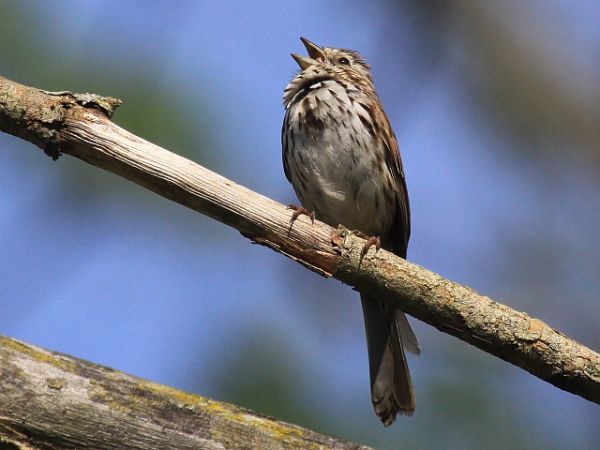
I’m getting my ears in tune for the wave of birdsong that’s migrating through Pennsylvania, now through the end of May.
It’s hard to do. Not only is my song memory a little rusty but the birds all sing at once. Their overlapping sounds can be confusing and there’s often a problem with background noise. In parts of Schenley Park the traffic roar from the Parkway East is a real auditory challenge, even for birds.
How do birds pick out the individual songs of their own species amidst the cacophony?
They’re able to do it, just like we are, using a technique called the Cocktail Party Effect — the ability to hear one voice in a noisy environment.
In 2010 scientists tested auditory nerve cells in zebra finches as the birds listened to various sounds, including their own species’ song. The tests were conducted in both quiet and noisy environments. In both situations the neurons in the birds’ brains lit up in a special way when they heard their own song. Like we do, birds have neurons tuned to filter out background noise.
Because birds’ auditory structures are similar to ours, scientists hope this finding will help develop better hearing aids and voice recognition systems.
Meanwhile I’m hoping that, with practice, birdsong will light up my brain in that special way too.
(photo by Chuck Tague)
The birds here in Alabama have been singing away for well over a month now. I love to listen to them in the early am when I walk the dog. They are all just so happy as the sun comes up!
Hey Kate…Off subject, but I was wondering if there was any sign of a “pip” yet?
I heard a strange bird yesterday and got a photo of it. It turned out to be an Eastern Phoebe. I always hear birds before I see them.
Keep at it and you will get it. After years of listening to bird song. Now when a bird song is different it immediately comes to my attention. During migration seasons its fun to find that new voice.
Peregrine fans, if you watch the Pitt streaming cam you can hear the chicks peeping from inside the eggs.
when I’m outside I always mentally quiz myself … I find that really helps. If there’s a song or sound I don’t recognize then I try to record it with my camera (video setting w sound) and then I go to the All About Birds website …
Doing this has taught me things like the fact the bluejays have an array of sounds and songs, not just the stereotypical “skreech” …. same with cardinals.
Searching for the sound has also led me to find birds I don’t normally see such as the Eastern Bluebird, brown headed cowbird and various woodpeckers.
Speaking of bluejay sounds, I discovered a new one this spring…the rattle call. It sounds rather mechanical and even toned. It is duller/softer than a kingfisher’s rattle. I heard it a few times and decided that the most conspicuous bird species around each time was the bluejay. Sure enough, a Stokes guide confirmed that this is part of their repertoire especially in early spring. Cool.